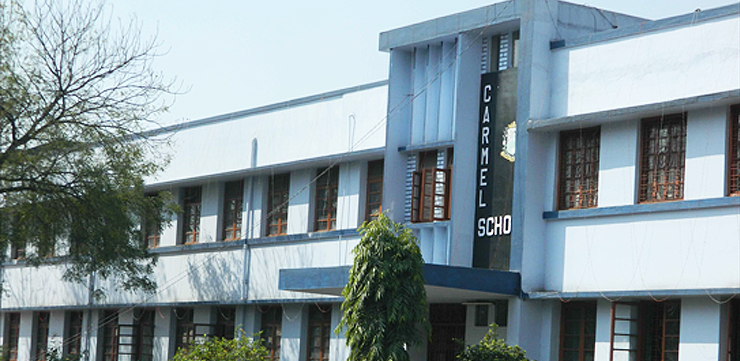School History
SCHOOL HISTORY (Affiliated to the Council for the ICSE ,New Delhi)
From the Thermal Power Station of Bokaro, the apostolic Carmel Sisters were called to the Collieries of Bihar, where the children of the rich and influential officials, as well as those of the poor people working in the coal mines, were longing for good education. Negotiations to open a convent in Digwadih were begun by Mother Clarissa, Superior of St, Joseph’s Convent, Hazaribagh, in collaboration with two Jesuits Priests – Father Jacque and Sharpe, stationed at Dhanbad. These priests took the initiative, to have a foundation of the Apostolic Carmel, in the area around the Central Fuel Research Institute, Digwadih. The then outgoing director of FRI, Dr. Whiltaker, and the incoming Director, Dr. Lahiri, carried on a brisk correspondence with Fathers Jacque and Sharpe, and brought about acceptance, from the Superior General of the Apostolic Carmel, of their invitation to have a school in the FRI colony, for the education of girls.
The beginnings of Carmel Convent, Digwadih, were in the FRI Colony, in a little house named the ‘Hill Bungalow’, often called ‘Booth Bungalow’, as the residence of the colony had condemned it as a haunted house. The little pioneering band of four Apostolic Carmel Sisters – Sister Violette as superior, with Sisters Terese, Marie Helen and Rosaline – landed at the Bhaga railway station on 7th January, 1955. Mr. Mani, the administrator of CFRI, not only gave them a warm welcome, but also escorted them to the bungalow, which was to be their home for the next few years. With their arrival, a new ray of hope came into the lives of the people.
In 1961, the first batch of 11 students appeared at the Bihar Secondary School Examination Board, obtained cent per cent passes, with six securing first division and five second. The Matric results of 1962 had left a memorable record in the history of the school, with ten first divisions, and one second. The school stood first in the percentage of first divisions in the Dhanbad District.
Needless to say, the school had very good prospects, with children coming from important industrial centres, like Dhanbad, Sindri, Jamadoba, Sijua, Sudamdih and Jharia.
As the pupils in the FRI School, Digwadih, were increasing, it was found necessary to put up a separate building for a Primary School, on the convent premises, with a gymnasium attached. The new foundation was started in June 1967 and completed on 30th April 1968.
Principal, Sister Theresine, saw the need of getting the school recognized by the Council for the Indian School Certificate Examination. It was also decided to have a Science Stream with Physics, Chemistry and Biology with Mathematics as an additional subject. To fulfil the need of having adequate laboratories, a plan was prepared for a double storied block, comprising three Laboratories and additional classrooms.
The new Bishop Rt. Rev. Joe Rodricks, blessed the building and opened the new Science Block on 19th November 1971. The school was affiliated to the ICSE Board in 1972 and Sister Mabilia had the responsibility of sending up the first batch of student for the ICSE Board. When the results were declared, all were pleasantly surprised by the cent percent passes. A memorable event in the history of Carmel School was when one of its students Sudeshna Saha, secured the first rank in India in the year 1987 – 1988 springing a pleasant surprise on all. The prestige of Carmel School rose and students from the neighbouring areas came seeking admission into the school. To accommodate the increasing numbers a second floor was put up on the primary school block and classes IV and V moved into it. With the efforts of Sisters Marie Zelie and Dipasha Computer classes were introduced in the large, well equipped hall of the high school building.
The spiritual growth of the staff and students was seen to, through orientation days and prayer experience sessions. At the Silver Jubilee celebrations held in 1980, Bishop Joe Rodricks of Jamshedpur, spoke of Carmel Convent, Digwadih as the ‘Motherhouse’ of the church in the Dhanbad District. On 10th April 2000, the school was to the Higher Secondary level, with the Science and Commerce Streams. This gave rise to the need for more space, for both classrooms and laboratories. Accordingly, a new building was constructed and classes began with 60 students for Science and Commerce. Six classrooms and a Library were added to the high school in July 2001, which gave better reading room facilities to the students. One more project for the poor non – school going children was initiated on 16 September 2004. The classrooms have been used for conducting the afternoon shift for the non – school going children, with teachers appointed to conduct classes from K.G. to class V. About 200 children are benefitting from this project.
